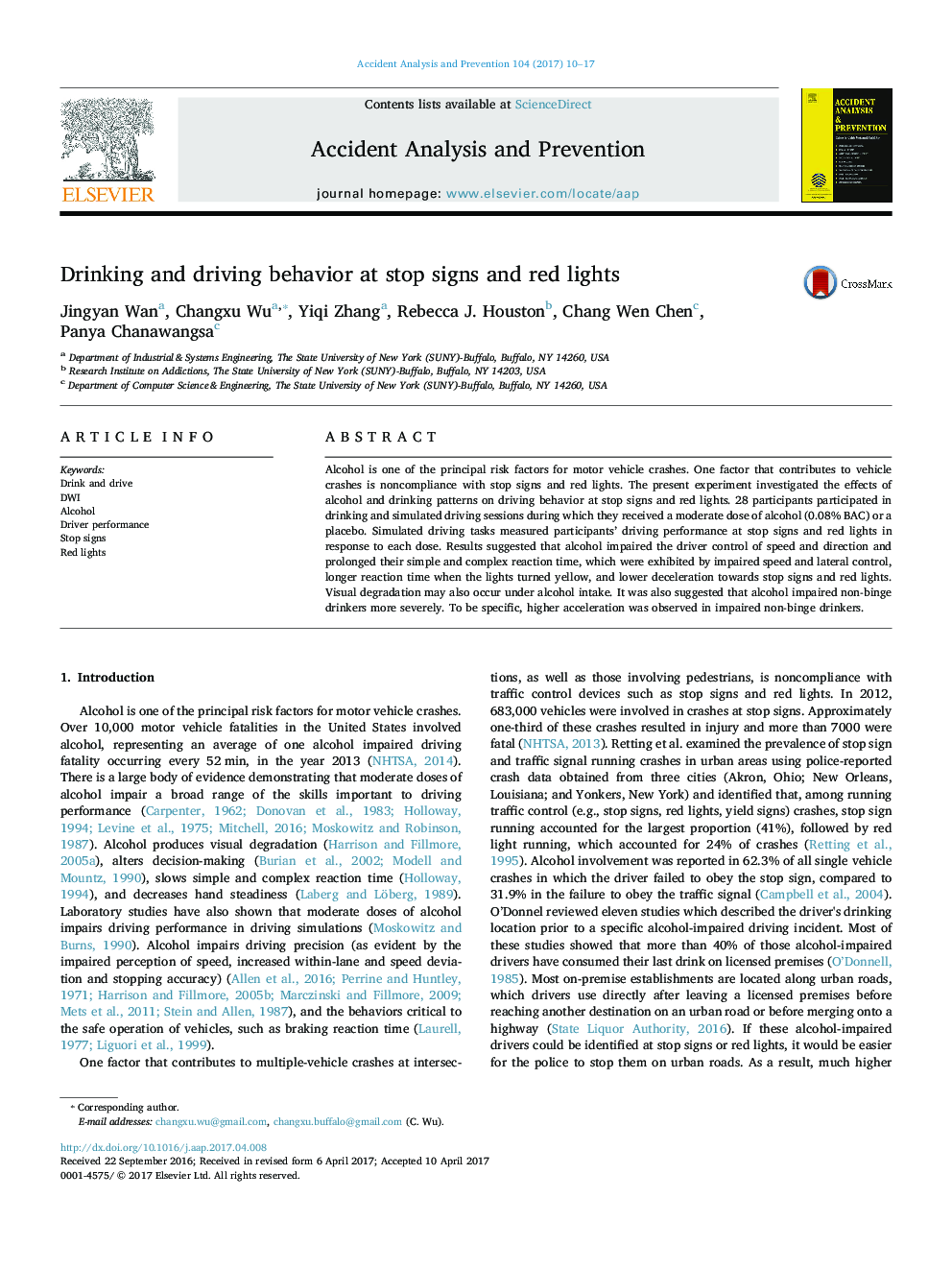| Article ID | Journal | Published Year | Pages | File Type |
|---|---|---|---|---|
| 4978616 | Accident Analysis & Prevention | 2017 | 8 Pages |
Abstract
Alcohol is one of the principal risk factors for motor vehicle crashes. One factor that contributes to vehicle crashes is noncompliance with stop signs and red lights. The present experiment investigated the effects of alcohol and drinking patterns on driving behavior at stop signs and red lights. 28 participants participated in drinking and simulated driving sessions during which they received a moderate dose of alcohol (0.08% BAC) or a placebo. Simulated driving tasks measured participants' driving performance at stop signs and red lights in response to each dose. Results suggested that alcohol impaired the driver control of speed and direction and prolonged their simple and complex reaction time, which were exhibited by impaired speed and lateral control, longer reaction time when the lights turned yellow, and lower deceleration towards stop signs and red lights. Visual degradation may also occur under alcohol intake. It was also suggested that alcohol impaired non-binge drinkers more severely. To be specific, higher acceleration was observed in impaired non-binge drinkers.
Related Topics
Physical Sciences and Engineering
Chemical Engineering
Chemical Health and Safety
Authors
Jingyan Wan, Changxu Wu, Yiqi Zhang, Rebecca J. Houston, Chang Wen Chen, Panya Chanawangsa,
